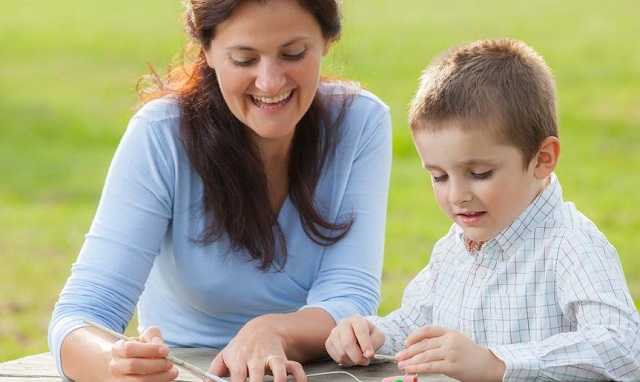If you are a teacher, then you might be well aware of the importance of student-teacher relationships and its impact on the performance of students.
When it comes to your rapport with students then, “There’s no middle ground, you either have it or don’t.” At first you may feel like you are bonding with students.
But chances are that you are not bonding with every student.
Building a relation with EVERY student might be intimidating but if you follow specific and purposeful strategies then you can do it. These strategies apply perfectly to those students who think the worst while entering the class. Generally, they hate school and everything about school. And in many cases, a strong rapport with teacher can change such student’s perception.
Look at – School supply list for every grade
Here come the strategies;
Task 1: Learn about the students and accept them as they are
- You can get the students and their families fill a basic questionnaire in the beginning of every new session. Ask simple questions related to the child like “What quality of your child you are proud of? Which areas you want your child to improve in? What would be helpful for me to help your child?” Most of them would offer enough insights about the student while some might be superficial wholly.
- On their first day ask all the students to write on an index card; chunks of information about them, like “What do you think people don’t know about you?” You are going to be surprised to see the variety of answers, from favorite ice-cream flavor, phobias to very personal information. Read those cards for the next couple of days and use them to initiate conversation with them.
- Put the best efforts to find out the story of every student. You need to know their families, their goals, interests, cultures etc. to truly help each student reach their full potential.
- Always look at the best things of the students. Try to be the teacher who defends the children when others are belittling the kids’ abilities.
Read also – School Absence Problem
Task 2: Expect the best from every student
- Educators have got this ability to change the way students perceive themselves. They believe you when you tell them that they are good. As a converse, students think that they are not smart or poor when they receive poor grade. Would anyone like to go to the place where they are told that they stink, everyday? No, never. Teachers should be supporting their students by understanding their efforts and progress.
- If feasible, rather than giving poor grades; give not yet – implying that more mastery is needed and together we will get it.
- Identify specific potentials and differences between the students. You cannot expect the same reciprocation from everyone. Standards set by state can’t be relied wholly. Some students achieve that standard in 1 day while others could never meet that.
- Experiment teaching using multiple pedagogues, this enables students to learn despite their differences. Standardized lessons and inflexible activities limit opportunities for students and halt expression of their abilities.
Task 3: Teach the lesson of empathy, sympathetically
- For the students, classroom should be a safe place. Make a culture among students where they care for and support everybody.
- Make sure every student has a voice, recognize and celebrate their differences. Emphasizing shared values and common interests catalyzes the execution of such culture.
Task 4: Wear optimism and stay energetic
- Be earnest. Obviously, there are a few subjects that you might not find very interesting to teach. But for the sake of students, pretend to be passionate. If you are not interested, how can you expect the students to show enthusiasm?
- Initiate the interaction early and often, greeting students at the door is a good idea. Pepper it up by asking a personalized and non-academic question.
- Boast your students’ achievements. Social media is a good tool to showcase their achievements. Your students might not be on social media but they feel better about themselves just by knowing so. They also gain motivation when they know that someone tweets about their exploits and accomplishments.
- Tell positive things about to their parents and send positive post cards to their homes.
Task 5: Establish trust with them
- Expose your weakness. For example, if you are bad at singing or drawing then sing in front of them, show them that it’s okay to have flaws and embrace them.
- Experiment risking and share with students. You may consider changing the lesson year-to-year maybe just some minor tweaks or a complete makeover. If the lesson is new then you may want to share with students that the lesson is new. Tell them, this is a new lesson and it may or may not be great. I will ask for your feedback when I am finished off the lecture. Take feedback, learn and iterate.
Task 6: Stay true to yourself
- Show them who you are, what you like and what you don’t like. Before starting any activity show the children your own work.
- Try to tell as much personal stories as you can at appropriate places. It gives the student an essence of personal warmth, and it makes learning more fun.
- You cannot fake who you are in front of the students, they can catch it easily. Thus, be confident about you identity and better don’t try to be someone else.
Building a relation between the students and teachers is an act that needs to be taken out, it just not happen on its own – everything, be it your personality, the way you set the class, your lessons or your family communication, all of this has an impact on the way you build meaningful and long-lasting relationships with students.
Let’s conclude it with the last tip
You must reach their hearts and souls before you reach their minds.

